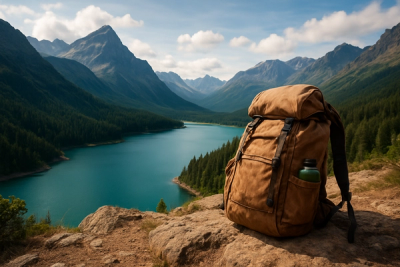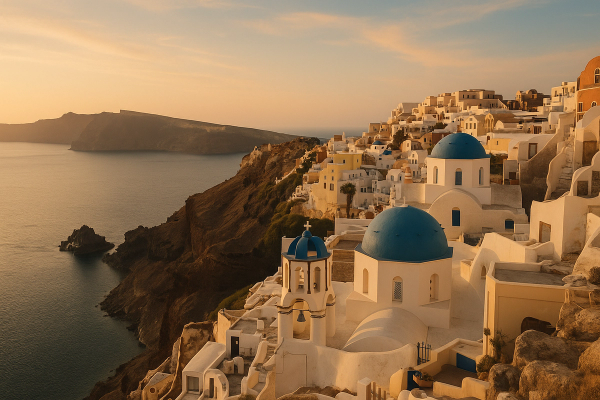Unique Global Stays: Adventure Lodges for 2025 — the places that got under my skin#
So, um, quick confession — I didn’t plan to spend half of 2025 sleeping in domes, cabins, cliff pods, and an old radio station at the edge of the Arctic, but here we are. Adventure lodges have totally blown up this year, and not just on TikTok. There’s this combo of raw nature plus little creature comforts and local guides who actually know the land, and it’s… addictive. I kept telling myself one more trip, just one more, and then next thing I’m googling “can you buy thermal base layers in Punta Arenas” at midnight. Long story short: I chased some unique stays around the world and learned a lot. Some of it the hard way, because me and planning aren’t always on the best of terms.¶
Why adventure lodges are such a thing in 2025 (and honestly, I get it)#
People want big nature with small footprints. That’s kinda the mood right now. Lodges are leaning hard into sustainability — solar, greywater systems, locally sourced food, rewilding projects — and, bizarrely, better Wi‑Fi out in the sticks thanks to satellite setups. Which means you can do a gear-drying day and still send Slack messages or one extremely smug photo of you hot-tubbin under a glacier. Bookings in 2025 are wild too: shoulder season’s hot, dynamic pricing’s everywhere, and lots of places are bundling guided activities, meals, and park permits because it just makes sense. Also travel admin stuff changed, like ETIAS in Europe finally doing its thing, UK ETA rolling wider, Bali charging a little tourist tax, Kenya using an eTA now. I’ll get into the visa bits later because oof, that part can bite you.¶
Patagonia, Chile — EcoCamp Torres del Paine’s domes and the sound of wind that never, ever stops#
I’ve wanted to sleep in those geodesic domes since forever. You see the photos and think, cool, I’ll be tucked up under the stars while the Towers glow pink. Reality? Yes, that. Also wind. The domes flex and sigh and it feels, I dunno, very alive. I booked a 4-day program which included guided hikes, meals, transfers from Puerto Natales — honestly worth it because logistics here are a puzzle. My guide, Nico, had a sixth sense for when the weather would turn and where the guanacos were hiding. We did the Base of the Towers hike, got pummeled by gusts, cried a little at the view, laughed, ate way too many alfajores. 2025 pricing for EcoCamp floats (seasonal, demand-based) but think around $300–$700 per person per night depending on the dome category and whether you go bed-and-breakfast or fully guided. Availability spikes October–March, shoulder season in April and October is magic if you like fewer people and moody skies. Park permits are handled in your package most of the time. Safety-wise: pack for four seasons in a day. And bring a spare buff — mine flew away, RIP. Visa-wise for Chile, many travelers get visa-free entry for short stays, but check your passport. I saw fellow Americans and EU folks breeze through. Don’t be me, verify your passport’s 6-month validity before you fly.¶
Sacred Valley, Peru — Skylodge Adventure Suites, aka sleeping in a clear pod bolted to a cliff (no, your legs don’t stop shaking)#
Skylodge is pure adrenaline and surprisingly cozy. You climb a via ferrata in harness and helmet, then haul yourself into a glass pod that hangs over the valley like you’re a very fancy bat. Dinner arrives in a sealed bag like a space meal, but it’s Peruvian and delicious. Sunrise is wild — hummingbirds buzzing, a river murmuring 1,200 feet down. Prices in 2025 hover around $400–$600 per person including climbing/zipline access, dinner, breakfast, and guides. It books up months ahead in dry season (May–September). If you’re doing Machu Picchu the same week, note Peru’s timed-entry rules are strictly enforced now and the train reservations can be tighter than they used to be, so plan your days, like really plan them. Altitude? I felt it. Hydrate, arrive in Cusco or the Valley with a couple acclimatization days. Most nationalities get visa-free entry for short tourism, but, again, check — I met a Canadian who didn’t realize her passport had only 3 months left and had to scramble for an appointment. Not fun.¶
Highlands, Iceland — Highland Base Kerlingarfjöll and the earth literally steaming beside your breakfast#
Kerlingarfjöll used to be this rugged tent spot, and now Highland Base (opened recently, updated again for 2025 operations) is like mountain hut vibes but sprinkled with spa. Wooden rooms, geothermal steam rising beyond the deck, a cold plunge that felt like a dare. F-roads to the highlands tend to open from late June, but it’s weather dependent, and closures happen. In 2025, Reykjanes volcanic activity kept popping off again — I mean, on-and-off — so plan flex and keep an eye on SafeTravel.is and the Icelandic Met Office. Highland Base rates vary wildly — roughly $250–$700 per night depending on room and season. Snowmobiling and guided hikes were extra. Safety: stay on marked trails; those hot springs aren’t all swim-friendly even if they look like soup. Entry-wise, ETIAS has rolled in for many visa-exempt travelers to the Schengen area this year, costs €7, valid for three years. Ireland’s separate, as usual. Don’t forget to apply before you land — met a guy at KEF scrambling on spot and that never not sucks.¶
Isfjord Radio Adventure Hotel, Svalbard — a former radio outpost at the end of the world#
I took a boat from Longyearbyen and the ocean felt the color of lead. Then this building appears, lonely and perfect. Inside it’s warm, with a dining table that anchors the whole evening and stories about polar bears and winter darkness that left me quiet. Polar bear safety is not optional here — you move with guides outside the perimeter, period. We did hikes in drysuits across little inlets, learned to keep eyes on ridgelines. 2025 pricing for Isfjord Radio is generally in the $300–$500 per person per night range depending on package and season, with meals included and activities added. Svalbard is visa-free to enter for many, but you pretty much transit via Norway, which means you need to meet Schengen and airline requirements, and ETIAS applies for many nationalities now. Availability spikes June–September; winter trips often rely on snowmobiles, and weather calls the shots like a boss.¶
Skeleton Coast, Namibia — Shipwreck Lodge where fog tastes like salt and hyenas side-eye you#
Shipwreck Lodge is honestly a fever dream. The cabins look like little ship hulls washed into dunes, the Atlantic roaring somewhere close. Mornings were cold, like properly cold, then burning bright by ten. We tracked desert-adapted elephants and stared way too long at a bleached whale bone while our guide taught us about fog beetles. It’s spendy: think $800–$1,200 per person per night in 2025, fully inclusive with game drives and transfers. Worth the splurge if you can swing it. Lots of nationalities can get visa on arrival in Namibia, but check your passport and whether you need an e-visa processed ahead. Self-driving in the Skeleton Coast isn’t casual — permits and routes are specific, and the sand will eat your plans. Go with a lodge transfer unless you really know deserts. Also, don’t under-estimate the cold at night. Bring layers. I didn’t. I regretted. Deeply.¶
Raja Ampat, Indonesia — Papua Explorers and fish like confetti#
So the moment I put my head underwater here I forgot my name. It’s that kind of coral and fish madness. Papua Explorers (and similar eco dive lodges around the islands) use local wood and keep operations pretty low impact. Marine park fees are real and worth it. 2025 prices vary, but expect $250–$450 per person per night for full board in many lodges, diving packages on top. Currents can be strong — I did a checkout dive that felt like riding a river. Visa-wise, Indonesia’s eVOA is super handy now, and if you’re entering via Bali remember there’s a new tourist tax since 2024 that continues in 2025 — IDR 150,000 per person, payable online or on arrival. Domestic flights to Sorong can get delayed, so buffer days are your friend. And please, reef-safe sunscreen. The ocean doesn’t need your chemical soup.¶
New Zealand — Minaret Station if you want the helicopter-lodge fantasy for real#
Okay, this was my mega-splurge. You fly in by heli, land in this outrageous alpine bowl, and suddenly everything smells like wet grass and wool and pine. The rooms are all timber and thick blankets, and dinners go from venison to impossible desserts without feeling fussy. 2025 rates are high — think $1,500–$2,500+ per person per night all-inclusive with guided activities. Worth it if you want that once-in-a-lifetime thing. Practical bits: NZ eTA is still required for visa-waiver nationals, and the IVL conservation fee too — apply ahead on the official app. Weather moves fast here; our hike turned sleety in 20 minutes. Lodge had spare jackets, but bring your own shell — I learned the hard way after my so-called waterproof soaked through like a sponge.¶
Kenyan conservancies — smaller crowds, bigger heartbeats#
I did a few nights in a private conservancy near the Mara instead of inside the park. Genuine game viewing, less vehicle traffic, guides who track with patience instead of chasing “the sighting.” Prices in 2025 range wildly from mid-tier around $300–$600 per person per night to sky-high $1,200+. Many lodges include community fees and support projects, which I honestly love. Kenya switched to an eTA in 2024 and it’s the standard in 2025 — apply online before you fly, it’s around $30-ish and approval can be quite fast, but don’t bank on last-minute. Night drives in conservancies were my favorite. Stars, lions talking from somewhere you can’t see.¶
The admin nobody wants: visas, entries, and little rules that matter in 2025#
- Europe: ETIAS is live now for many visa-exempt travelers to the Schengen area. It’s €7, valid for 3 years, not a visa but a pre-travel authorization. Apply before you fly.
- UK: ETA has rolled wider in 2025 and many visa-exempt nationals now need it. It’s about £10 via the official app. Quick approval, but don’t leave it to the airport line.
- New Zealand: NZ eTA required plus the IVL conservation fee. App is fastest. Have your passport ready, don’t try this on hotel Wi‑Fi at 2am like me.
- Canada: eTA for air arrivals for visa-exempt travelers, CA$7. USA: ESTA still in play, currently $21. Check your passport validity and those return/onward ticket rules.
- Indonesia: eVOA is available and speeds things up. Bali tourist tax persists in 2025 (IDR 150,000). Pay online to avoid that one kiosk with 37 people.
- East Africa: Kenya uses eTA now; Tanzania still on eVisa and visa-on-arrival for many. Rwanda continues being very friendly with visas-on-arrival for a lot of nationalities. Always check your own passport’s rules — they shift.
Safety and destination updates I actually felt in my bones#
Iceland’s highland roads open and close like a mood ring — even in summer, F-road conditions can flip. Keep an eye on official channels and be flexible. In Svalbard, polar bears are no joke; you don’t wander alone. In Patagonia, wind can make a normal hike feel epic. Pack eye protection and a proper shell even if you think you’ll look silly. Wildfires and heat waves are still part of travel reality in 2025. Friends in BC and the Med had to reroute trips last minute. Get trip insurance that covers weather disruptions and adventure activities by name — “climbing” and “via ferrata” aren’t always included under generic policies. And if your lodge offers satellite messaging devices for treks, take them. The one time I didn’t bring mine… never again.¶
Pricing and availability this year — not gonna sugarcoat it#
Dynamic pricing hit the wilderness. 2025 lodge rates spike on weekends and holidays, shoulder seasons are your friend, and packages are changing monthly. I saw Patagonia domes jump 20% over two weeks because a big group blocked dates. Deposits are standard now, and cancellation windows are tighter than pre-2020 days. Lots of places require full payment 30–60 days out for peak season. Also, many lodges added sustainability fees or conservation levies that go straight to park maintenance or local projects. I’m into it, but it can make your bill look like it grew extra toes. Tip: write to the lodge directly. Third-party sites sometimes show ghost availability. Direct bookings got me waitlist priority twice. And yeah, I set 6am alarms to refresh dates. Not proud, sorta effective.¶
My favorite small moments (the stuff that sticks)#
- Listening to the cook in Svalbard explain how they store fresh herbs under near-midnight sun. Weird and beautiful.
- A pisco sour in a Skylodge pod, glass fogging, total silence except my heartbeat keeping time.
- Snow smell in Kerlingarfjöll. I swear it has one. Don’t ask me to describe it.
- Falling asleep in a Patagonia dome while the wind made whale noises… or something.
- Watching reef fish at Raja Ampat do their chaotic school dance, realizing I’d been underwater for 64 minutes and didn’t wanna leave.
What I wish I’d known (so you don’t repeat my oops)#
Book permits early — Torres del Paine slots and guided circuits fill fast. Pack less. Every lodge I stayed at had drying rooms, spare baselayers, and will literally lend you gloves if you ask. Bring duplicates of chargers and at least one power bank. Also, don’t assume airport food on remote routes; I ate instant noodles from a boat galley once because my “I’ll grab something at the terminal” plan failed. Check small fees — marine park levies, conservation fees, city taxes — they add up. And triple-check entrance authorizations: ETIAS, ETA, eTA, eVOA — too many little letters, but they matter. I got lucky once in London when my ETA came through in 5 minutes. Don’t count on that.¶
Would I go back?… yeah, like tomorrow if my bank account stopped screaming#
Adventure lodges aren’t the cheapest way to see nature, but they’re a real way. Local guides, low footprint, big learning. I left each place with this weird mix of calm and adrenaline, like I’d been reset. In 2025, the world feels louder — politics, climate, everything — and these stays felt like a honest conversation with the land. I’d repeat all of them, and add a couple more: Mongolia for yurts, Greenland’s Ilimanaq for iceberg mornings, maybe Norway’s Lofoten for rorbuer and midnight sun. I’ll probably mess something up again, miss a ferry, forget a buff. Still worth it.¶
If you’re on the fence about adventure lodges, go once. One night. Let the wind write in your head. It’s closer than you think.
Final travel thoughts (and one last tiny PSA)#
Adventure lodges in 2025 are this sweet spot of soul and smarts — sustainable builds, community-focused guides, safety handled like grownups, Wi‑Fi if you need it. Do your admin early, keep your plans flexible, and pack for the weird weather of our times. And hey, if you want more messy, honest travel stories or some practical guides, I keep bookmarking stuff on AllBlogs.in — they’ve got a bunch of pieces that helped me not totally embarass myself out there.¶














